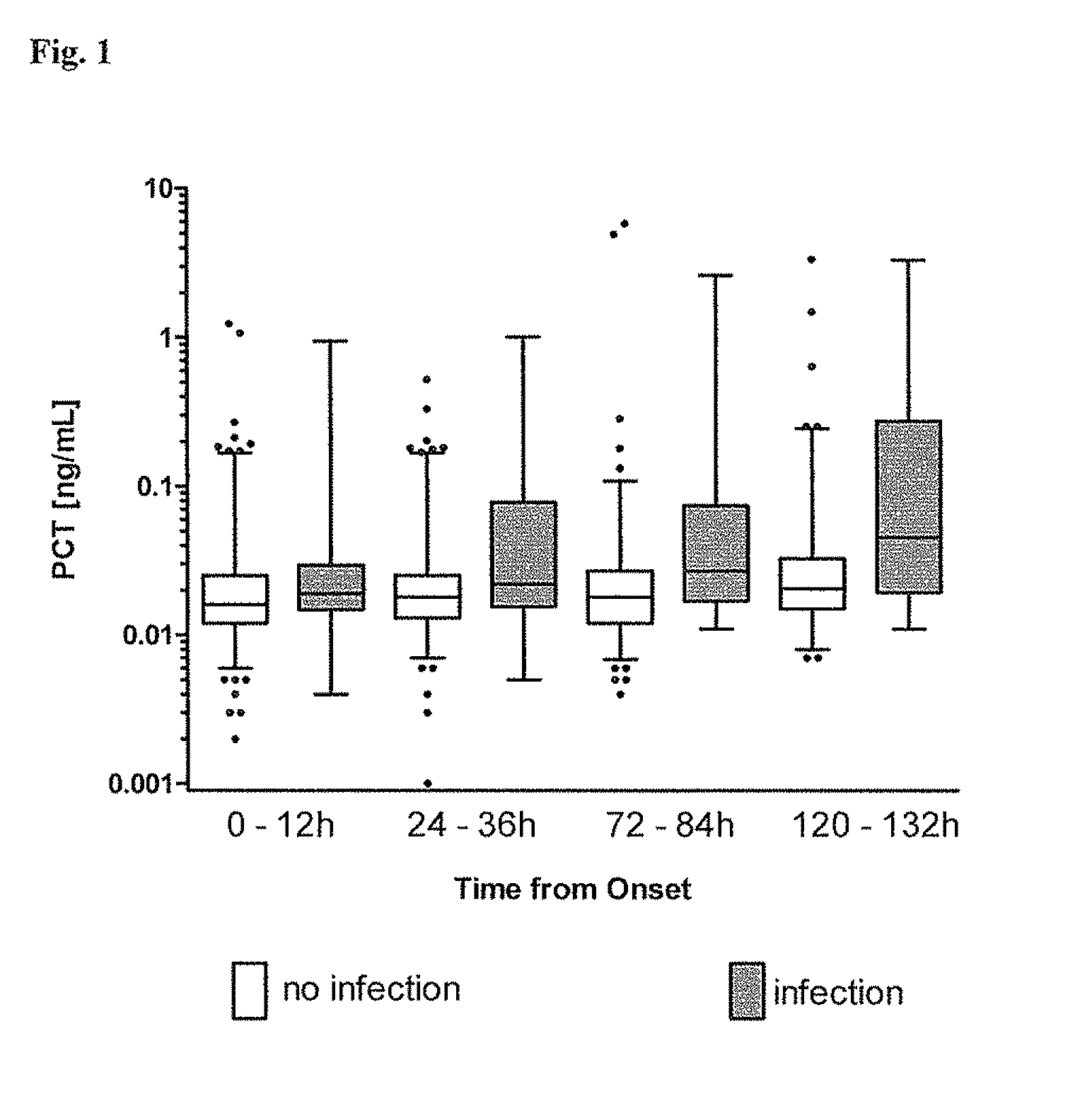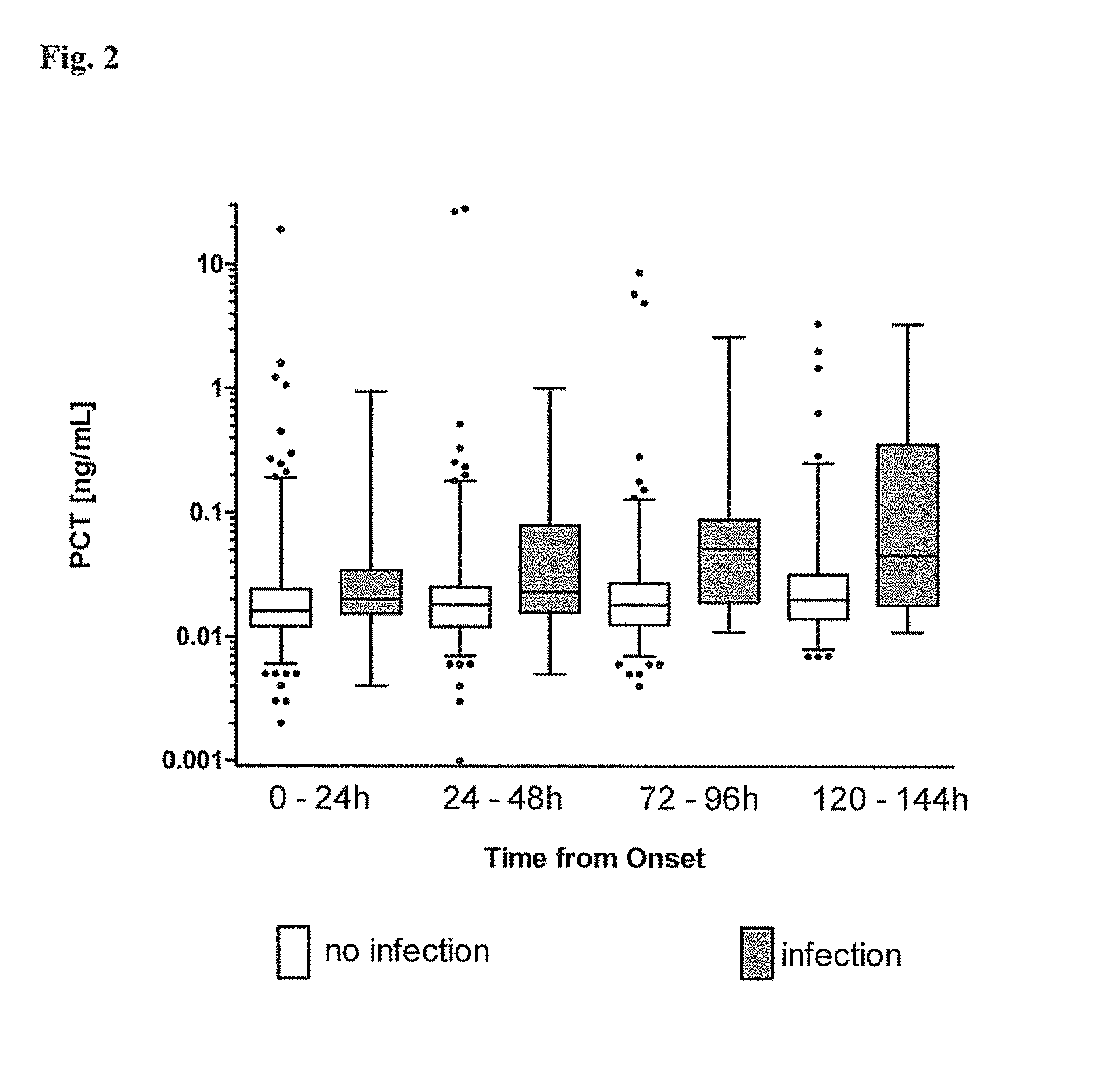Procalcitonin for the diagnosis of bacterial infections and guidance of antibiotic treatment in patients with acute stroke or transient ischemic attack
a technology of bacterial infections and procalcitonin, which is applied in the field of clinical diagnostics, can solve the problems of high risk of subsequent adverse events for patients with tia, a burden on health care providers, and the poor sensitivity of pct level detection of patients, and achieves the effect of improving patient outcomes and high sensitivity of pct level detection
- Summary
- Abstract
- Description
- Claims
- Application Information
AI Technical Summary
Benefits of technology
Problems solved by technology
Method used
Image
Examples
example 1
Clinical Study Description
[0065]The study was set at the emergency and neurological and neurosurgical clinic of the University Hospital of Basel. All consecutive patients who are admitted to the emergency department with an ischemic or hemorrhagic stroke or transient ischemic attack (TIA) according to the World Health Organization criteria with symptom onset within the last 3 days were included into the study. Patients without an informed consent were excluded. Baseline data collection in patients contained:
a) age,
b) gender,
c) body mass index (BMJ),
[0066]d) medical history items: actual history that preceded the hospitalization; ABCD score (Rothwell et al. 2005. Lancet 366: 29-36) in patients with transient ischemic attack; family history; relevant co-morbidities also assessed by the charlson index (Goldstein et al. 2004. Stroke 35: 1941-5) (i.e. hypertension, previous stroke, previous TIA, ischemic heart disease, atrial fibrillation, diabetes mellitus, renal and liver dysfunction, ...
example 2
Measurement of Procalcitonin
[0071]PCT was measured using an ultrasensitive commercially available test system with a functional assay sensitivity of 0.007 ng / mL as described in Morgenthaler et al. (Morgenthaler et al. 2002. Clin Chem 48:788-790). Briefly, sheep antibodies were raised against the calcitonin moiety of PCT, and a mouse monoclonal antibody was raised against the katacalcin moiety of PCT. Tubes were coated with the anti-katacalcin antibody. The anti-Calcitonin antibody was labelled with MACN Acridiniumester (InVent GmbH, Hennigsdorf, Germany) and served as tracer. Dilutions of recombinant PCT in normal horse serum were used as calibrators. 100 μl, sample or standard was incubated in the coated tubes for 30 minutes, 200 μL tracer was added. After further incubation for 2 h the tubes were washed 4 times with 1 mL of LIA wash solution (BRAHMS A G, Hennigsdorf, Germany), and bound chemiluminescence was measured using a LB952T luminometer (Berthold, Wildbad, Germany).
Results
[...
PUM
| Property | Measurement | Unit |
|---|---|---|
| concentrations | aaaaa | aaaaa |
| length | aaaaa | aaaaa |
| threshold level | aaaaa | aaaaa |
Abstract
Description
Claims
Application Information
 Login to View More
Login to View More - R&D
- Intellectual Property
- Life Sciences
- Materials
- Tech Scout
- Unparalleled Data Quality
- Higher Quality Content
- 60% Fewer Hallucinations
Browse by: Latest US Patents, China's latest patents, Technical Efficacy Thesaurus, Application Domain, Technology Topic, Popular Technical Reports.
© 2025 PatSnap. All rights reserved.Legal|Privacy policy|Modern Slavery Act Transparency Statement|Sitemap|About US| Contact US: help@patsnap.com


